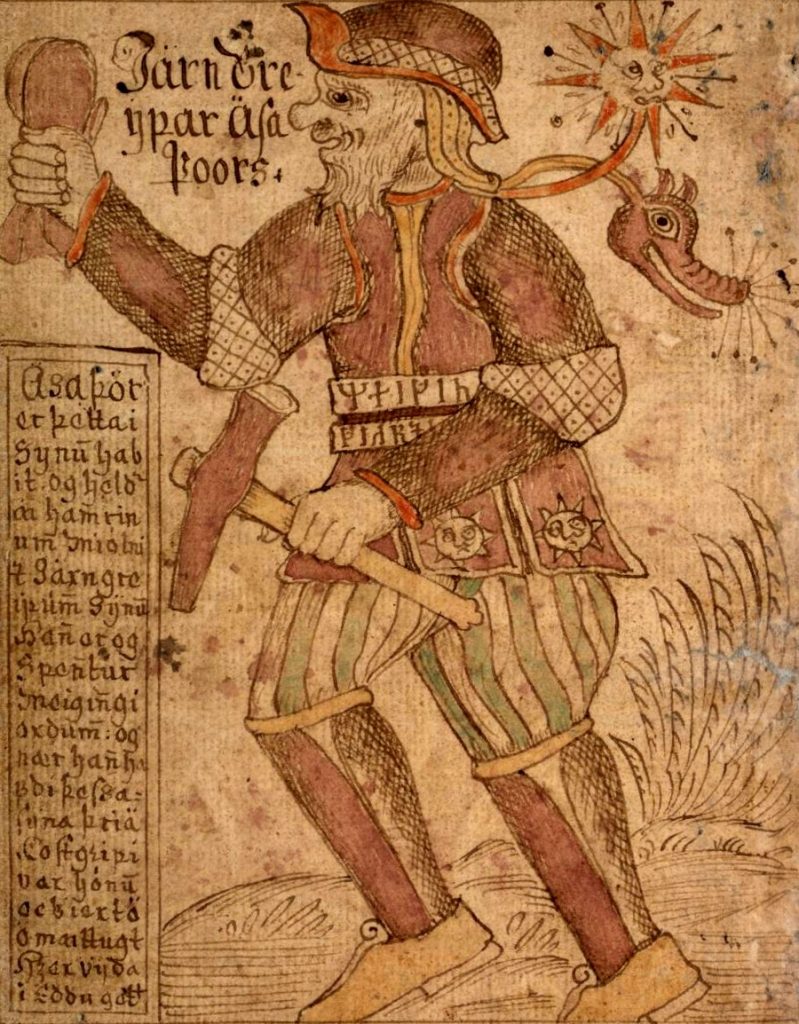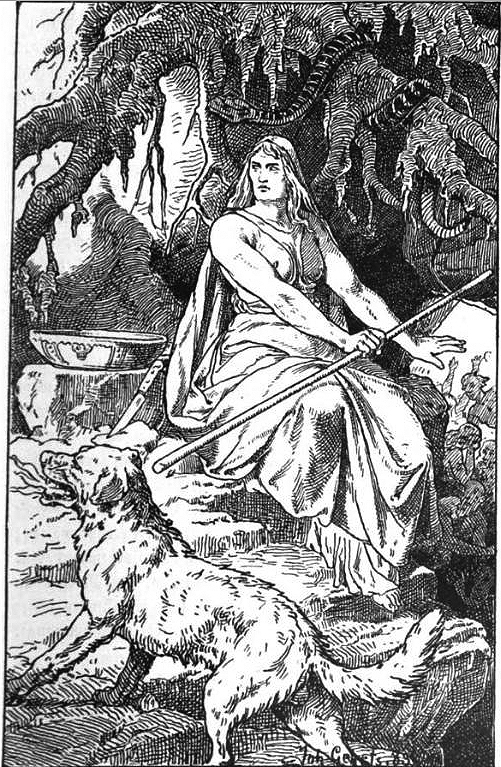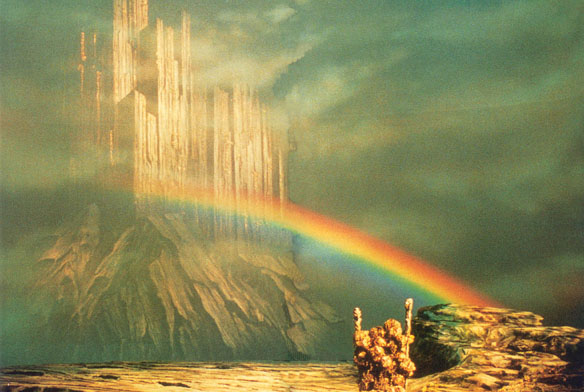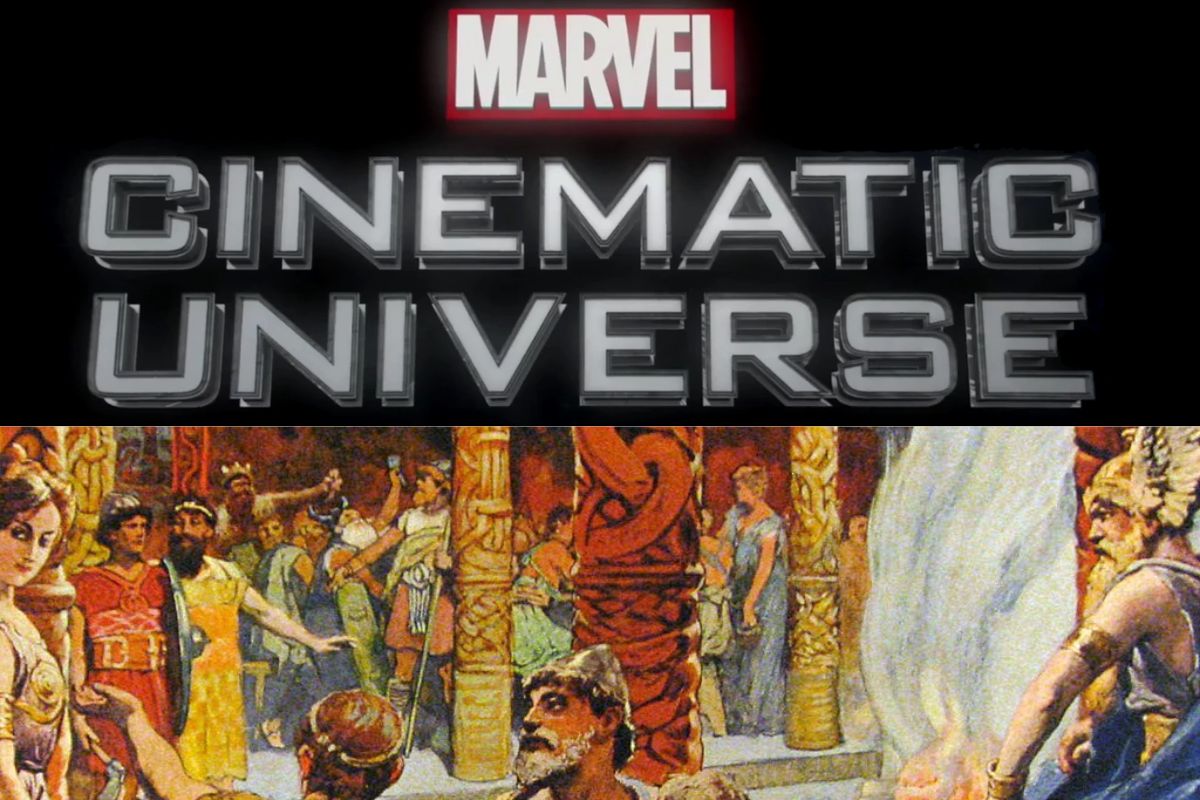We have seen many examples of Norse legendary characters in the Marvel comics and films, such as Thor, Loki, Odin, Frigg, and even Thor’s goats. In some cases, the movie events tie in with the legends. However, they are many examples of the films bending the truth a little, and others where they bear no resemblance whatsoever to the ancient myths.
Here, we discover just what is accurate and what has been introduced to make the movie and comic book narratives flow a little more seamlessly.
Are The Norse Related Events In The Marvel Movies Based on Viking Mythology?
The answer is yes; some are.
Think of Thor: Ragnarok. Ragnarök, for example, was mentioned several times in the most referenced works of Norse mythology, the Prose Edda and the Poetic Edda.
Ragnarök was the Norse legend of their gods’ end of the world. Texts tell of the prophecy rather than the actual events happening. In Norse myth, Odin reanimates a dead witch (or “völva”) to question her about the death of one of his sons, Baldr. The sorceress tells him about a final battle that pitches giants, monsters, and Loki against the pantheon of Æsir (Asgardian) and Vanir gods.
The fire demon Surtur (“Surtr” in Norse mythology), who destroys Asgard in the movie, is a fire giant in Viking legend.
The Battle
The Æsir fight side-to-side with the Einherjar, the host of dead warriors from Valhalla. The wolf Fenrir eats Odin whole before one of his sons, Vidar, wearing a magic shoe that helps him to hold the wolf’s mouth open, drives his sword through its throat.
God of war, Tyr and Garm, the wolf guardian of Hel, fight and kill each other, as do Heimdall and the trickster god Loki. Thanos, the killer of Loki and Heimdall in the Marvel world, does not appear in Norse mythology.
Without his magic sword, Freyr is killed by Surtr, although Freyr inflicts a mortal wound on the fire-giant god with an antler.
Thor kills Jörmungandr with his hammer Mjölnir, but the poisonous serpent bites him, and he too dies after taking nine steps.

The Dark Elves and the Giants
The Dark Elves were not an evil race who wanted to take over the nine realms in Norse legends, as they did in Thor: The Dark World. They are hardly mentioned, only attested as a contrast to the light elves.
In the Prose Edda, Snorri Sturluson’s uses of “dvergar” (dwarves), svartálfar (black elves), “ljósálfar” (light elves), and dökkálfar (dark elves) are confusing, and they could be interchangeable.
How Is The Marvel Universe Different From Norse Mythology?
Thor
Thor Odinson is the god of thunder in both versions. Odin is correctly depicted as his father in the movies, but his mother is Frigg. In Viking legend, it is Jörð, a Norse goddess.
Norse Thor is married to the golden-haired Sif, but she is his raven-haired fighting companion in the movies. He is depicted as extremely muscular in most illustrations throughout history but is never illustrated or described as being fat. Fat Thor is only seen in Avengers: Endgame.
The Eddas state Thor was tall, muscular, and the strongest of all gods. He was apparently so tall he could almost touch the sky, although Jörmungandr was still longer.
Thor and Loki are half-brothers in the Thor movie universe. They are not related in Old Norse mythology.
Norse-mythology Thor has red hair and is depicted as such in paintings by Swedish artist Mårten Eskil Winge, for example. He is blond in Marvel’s version.
The movie version of Thor throws a magical lightning bolt through Zeus’ chest in Thor: Love and Thunder, something that, of course, never happened in Old Norse mythology!
Thor owns a magic belt Megingjörð in Viking legend and the Marvel comics. However, this belt has not yet appeared in the Marvel Cinematic Universe.

Odin
Odin is correctly described as the supreme Norse god in both versions.
He loses an eye in the battle against the giants as a Marvel character in the movie Thor but plucked it out to obtain knowledge from the sage Mímir in Norse legend.
Loki
Loki is a jötunn in both versions. However, the comic books and movie tell us that Laufey, the king of Jotunheim and Loki’s father, when Laufey is actually Loki’s mother in Norse mythology.
He is Thor’s adopted brother in the Marvel universe but not in Norse legend. In Viking mythology, he is actually Odin’s blood brother.
According to Viking legend, his portrayal as the evil god of mischief is accurate. However, he has no “redemption arc” in Norse myth and leads the band of giants and evil creatures during Ragnarök.

Frigg
In Norse mythology, Frigg, the Queen of Asgard, was a Vanir (from Vanaheim) and the highest-ranking Æsir goddess. Wife of Odin, they have three sons: Baldr (also known as Baldur or Balder), Hermod, and Hodr.
She is Thor’s mother in the Marvel canon but not in Norse legend.
Hel/Hela
Hela is a fictional Marvel character. She is based on the goddess Hel from Norse mythology.
Hela is the daughter of Odin, according to the lore in the movie Thor: Ragnarok. However, she is the daughter of Loki in Norse mythology.
In Norse myth, Odin appointed Hel (or Hela in Thor: Ragnarok), the daughter of Loki, as the ruler of Helheim, the realm of the dead. She is wrongly depicted as the daughter of Odin and the brother of Thor in the movie, Thor: Ragnarok.

Jotunheim
The Thor movie of 2011 accurately described Jotunheim as a land of giants. In the film, Odin described the frost giants as coming from “a realm of cold and darkness,” which ties in with what we know about Jotunheim. That said, the stature of the frost giants in the movie isn’t that of a giant at all. They are just slightly taller than human beings.
The movie depictions of a great battle at Tønsberg, Norway, when Asgard’s armies drove the frost giants back to their world and took a magic casket back to Asgard, do not appear in Norse mythology.
Indeed, the majority of the scenes in the movie franchise do not bear any relationship to preserved Norse legends.
Although Heimdall does guard the rainbow bridge, the Bifrost, in the legends and film, the bridge only connects Asgard to Midgard in Norse mythology. In the movie, it takes Thor and his band to Jotunheim, when in legend, the river Ífingr is all that divides the two lands.
The movie depicts Jotunheim as rocky, dark, frozen, and desolate – pretty much how Norse mythology describes it.

The Einherjar
Einherjar, or the spirits of dead Vikings who have died gloriously in battle, appear in Marvel’s Thor. In the Marvel Universe, Einherjar are Asgardian warriors.
They are responsible for protecting Asgard and resolving conflicts within the Nine Realms. The Einherjar had been in existence since the reign of Bor, the second king of Asgard.
During the cosmic event called the Convergence, Malekith and the Dark Elves used an ancient weapon called the Aether to return the universe to darkness. Bor led an Einherjar army to defeat them.
None of these events are recorded in Old Norse texts. As we have seen, the Einherjar are the spirits of dead warriors taken from the battlefield by the Valkyries to their new home, Vallhalla.
Thor’s Goats
The latest installment of the MCU Thor series, Thor: Love and Thunder, introduces a pair of goats who also appeared in Norse legend.
In the film, Thor (Chris Hemsworth) battles Gorr (Christian Bale), the god killer, in his quest for supreme universal power.
The Asgardian’s allies, including “King” Valkyrie (Tessa Thompson), Doctor Jane Foster (Natalie Portman), and Korg (director Taika Waititi), help him through adventures in New Asgard, Omnipotence City, and Eternity.

